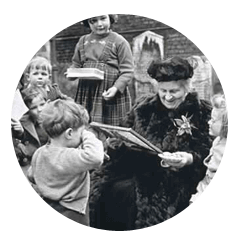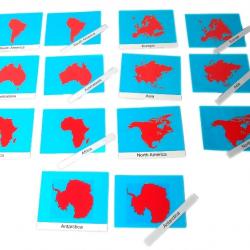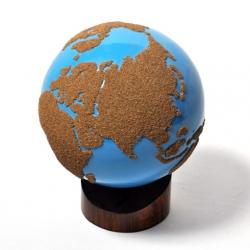The land is where our roots are. The children must be taught to feel and live in harmony with the Earth.
Dr. Maria Montessori

Geography Education in Montessori
Geography is the study of land, air, water, maps, continents and people. It is the study of the way life is and how the civilization has progressed over thousands of years, how cultures and features have developed in the various parts of the world by human beings. Different people around the world live differently and they adapt to their surroundings and life differently. The consumption of types of food, taste in music, infrastructure, weather, landscapes, lifestyle and many other influences that drive culture are different in different parts of the world. Children are curious and they seek answers that will help them understand a concept or an idea more and to understand more deeply. Geography in Montessori education provides children an understanding of the globe, continents, countries and people from different ethnic backgrounds, cultures and lifestyles followed according to what the people are living in.
The Montessori Geography curriculum is of two types mainly, physical geography and cultural geography. The vast understanding of both types will help children to have more insight into the physical and cultural geographies. Physical geography lessons offer understanding of the formation of Universe, Galaxy, Planets and Earth and all the physical properties of Earth and Cultural geography discusses society, culture, leadership, teamwork, independence and various other virtual influences that shape the overall system. The beneficial factors that come with the understanding of both types of geographies are that children learn and start to appreciate all members of the human race and the importance of co-existence in peace and harmony. Different age groups of children in Montessori learn different levels of geographical studies.
In geography, children in Montessori education learn continents and countries that are in a continent along with people from different countries, flags of different countries and different customs that make up a large part of the curriculum. The size and appropriate terms for the area of land and water are studied in order to give a perspective on how much of landmass and water on the planet accumulates for. To help children understand what the earth looks like and what are its properties, globes, maps, atlases and encyclopaedia are provided for references, so that the study becomes more simple and enjoyable. To provide experiences that are difficult to grasp instantly, the solutions are divided carefully to cater to young minds in the form of whole earth to continents to countries to states to cities and towns to neighborhoods.
Purpose of Geography in Montessori
The study of geography revolves around how the civilization and culture came into prominence in different parts of the world. Civilizations were systems and those systems were followed for many centuries to come into existence as a strong force to maintain life on earth. The history suggests that the evolution of geographic differences and locations revolved around the needs of humans in a particular region and dependencies that allowed growing with different foods, agriculture and irrigation, buildings, means of transportation, clothing, mental and spiritual needs, work, sports, societies and several others contributed to the formation of different tastes. To provide experiences for the child, the specifics are focused in terms of countries, languages, capitals, currencies etc, so that the worldview of a child broadens with more knowledge.
Is this illusory imagination, based upon credulity, a thing we ought to ‘develop’ in children? We certainly have no wish to see it persist; in fact, where we are told that a child ‘no longer believes in fairy-tales’ we rejoice. We say then: ‘He is no longer a baby.
Dr. Maria Montessori The Advanced Montessori Method

Children of different age are capable of understanding a certain set of emotions, feelings, lessons, actions and happening around them. Children aged up to 3 years can have a very limited capability of grasping certain things, so it is important for teachers and parents to instil the right amount and right knowledge and information in them. The rituals and routine lives of families and its members are absorbed unconsciously by a child and that is the reason parents must be extra cautious to make sure that the child's identity and their place in the community is imprinted and utilized in a right way. A child always learns in the confines of the family and then in the classroom. By the time children are aged 3 years, they expand their intellect beyond the family to discover outside things, the nature, other people, customs and routines of others and they all play an important role in developing of a mind of its own. Between the age 3 and 6, children start to experience sensorial elements, through touching, seeing, hearing they tend to notice the things around them and want to get the first hand experience of what it feels to hold, smell and taste.
The physical world is the most interesting aspect and everything around them is an exploration to dwell into. With more experiences they start to compare and reflect and start seeing similarities and differences that allows them to get a better of sense of judgment in their minds. Children start to build, break, design or draw and create something that teaches a lesson in a way that could have two possibilities, either to repeat or never. They start learning about different types of food consumed, different flags and languages, different ethnic backgrounds and appearances that may or may not look familiar in different countries and continents. They start to learn to appreciate the wonderful and amazing new things they learn every day.
Exercising Geography in Montessori
When children are introduced to geography, first aspect is to discuss how beautiful the world is seen from the space. Sky is a fascinating place for everyone to see the wonderful earth and how inexplicably beautiful it is to witness a breathtaking phenomena of view of oceans, border-less lands, gigantic ice-capped mountains, stunning sunrises and sunsets, auroras, and sheer brilliance of human intelligence scale that has no limits. Children are given various stories, trivia, facts and quotes from historical events, famous people, milestones and achievements upon which they can ponder and wonder and engage with responses and exchange of ideas. Discussions on the importance of protecting and preserving of nature, water, land and people around because of the only reason that it is the only place for life to sustain and in simplicity, where humans live and can. It gives them the idea of taking care of aspects from small to big and more importantly, active involvement and participation in taking care of our world.
It is a very common belief that the young child is characterized by a vivid imagination, and therefore a special education should be adopted to cultivate this special gift of nature...This childish characteristic, however, gave rise to the generalization of a materialistic idea now discredited: ‘Ontogenesis sums up philogenesis’: that is, the life of the individual reproduces the life of the species; just as the life of man reproduces the life of civilization, so in young children we find the psychical characteristics of savages. Hence the child, like the savage, is attracted by the fantastic, the supernatural, and the unreal.
Dr. Maria Montessori The Advanced Montessori Method

Exercises to show the scale and necessary approaches to understanding of various factors of the geographic world range from sensorial exercises to elementary assignments, discussions, exercises and practices. For example, when a child is presented a sandpaper globe and land and water models to gauge more of their interest into awareness for clearer understanding of islands, lakes, oceans, peninsulas, continents and many other that a simple map would not achieve. Classification cards, photos and images of different landmasses and watery bodies to differentiate. Understanding of different climates through the usage of pictures to showcase the arctic, antarctic, tropics and deserts and making them remember the terms and get a stronger grip on vocabulary by practices and repeated writings. In hindsight, these exercises improve with language development simultaneously. Outlining of maps to illustrate different countries and continents allows children to get a more advanced sense of geography.


